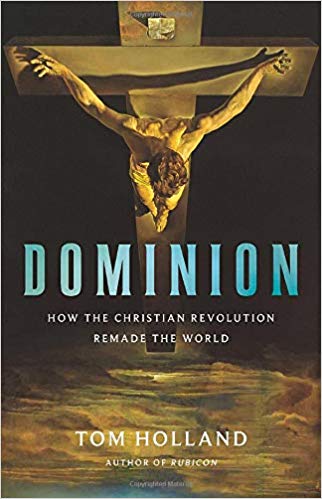Review by Philip Jenkins. Jenkins is distinguished professor of history at Baylor University. His many books include The Next Christendom: The Rise of Global Christianity (Oxford University Press) and The Great and Holy War: How World War I Became a Religious Crusade (HarperOne). The views expressed in this commentary do not necessarily represent those of BCNN1.
Tom Holland’s Dominion: How the Christian Revolution Remade the World is a substantial work that makes a straightforward case. In Holland’s view, the teachings of Jesus constituted an ethical revolution that would gradually transform human consciousness, to the extent that we today find it hard to imagine credible alternative systems. When we see Christians, past or present, behaving in ways we may find abominable, in matters such as war, slavery, colonialism, or patriarchy, our disgusted attitudes must themselves be understood as products of that sweeping revolution. Without the existence of Christianity, it would not occur to us to abhor such things, whoever the perpetrators might be.
Beyond any single policy or attitude, Christianity mattered because it taught respect (or even veneration) for the poor and the oppressed. That implied the historically unprecedented exaltation of humility, forgiveness, and love. Moreover, the faith created the practical urge to offer aid and relief, to assist the poor, and (among other things) to reject infanticide. Christianity is the essential foundation of the liberal West, of democracy, and of notions of human rights. As the book’s jacket copy proclaims, “Concepts such as secularism, liberalism, science, and homosexuality are deeply rooted in a Christian seedbed. From Babylon to the Beatles, Saint Michael to #MeToo, Dominion tells the story of how Christianity transformed the world.”
These are bold claims, to which I will certainly offer some caveats. What is not debatable is the very high quality of the book as a whole, and its appeal to anyone interested in Christian history. Rather than offering a straightforward narrative, Holland tells his story through 21 vignettes, each representing a particular historical moment, which he uses to advance his larger argument. Those together constitute three distinct eras of the church: Antiquity, Christendom, and a period he calls Modernitas, extending from roughly the middle of the 17th century to the present day.
The Antiquity section begins, winningly, with some pre-Christian examples, which serve to outline the framework from which the new order would emerge. Later, for instance, we have snapshot accounts of the issues and debates arising from Mount Tabor in Bohemia in 1420, St George’s Hill in England in 1649, or the Somme battlefield of 1916. In each case, Holland takes a specific incident as a launch pad for a wide-ranging account of related movements and themes, an approach that yields surprising and provocative connections. Thus, a section on “Lyon 177” naturally begins with the Gaulish persecution of that year, and the deeds of the church Father Irenaeus, but is soon conducting the reader through the following two centuries, through pivotal figures like Origen and sects like the Donatists. Some of Holland’s biographical sketches, such as that of Catherine of Siena, are effective, moving, and memorable.
I am confident that Holland could, if he chose, have expanded any or all of these quite rich vignettes to book-length studies in their own right. A reader feeling daunted by the whole book could very profitably dip into any of these chapters as a freestanding item. Although the book assumes little previous knowledge, the more familiarity readers have with the larger field, the more they will get out of this erudite work, and it repays multiple readings. This is a seriously rewarding project, well written and consistently thoughtful, and it can be heartily recommended.
But—and obviously there is a but—I would raise some objections. Looking through the list of vignettes, we must be struck by their overwhelmingly European focus, particularly upon Western Europe, whether Roman Catholic or Protestant. From the seventh through the 18th century, for instance, all the examples fit this category. You might find that reasonable, given that, during this era, Christianity had been seriously reduced from its earlier splendors in other parts of the world, such as Central Asia. But in Egypt and across the Middle East, those other churches persisted very strongly well into the 13th century and beyond. Nor, oddly, does Holland have much of note to say about Eastern Orthodox Christians, who right up to the First World War constituted perhaps a third of the world’s Christian believers.
In noting this, I am not just pleading for a larger number of representative examples, but mainly suggesting that perhaps the Christian reality Holland stresses—this supposed Christian revolution—hit some areas of the world and not others. If, for instance, we find that churches in France or Italy saw some values as fundamentally and integrally Christian, while the churches of Egypt or Syria did not, that does undermine the idea that the tradition of Jesus and his first followers inevitably led to certain conclusions or outcomes. We can hardly argue that the Coptic or Russian churches, for instance, just failed to receive the appropriate memos. Rather, it implies that those “revolutionary” values arose from a particular constellation of circumstances that affected Christians in (Western) Europe and Euro-America, but not elsewhere. They simply were not part of the faith’s original DNA, which exposes a weak point in his argument.
Source: Christianity Today
All Content & Images are provided by the acknowledged source
